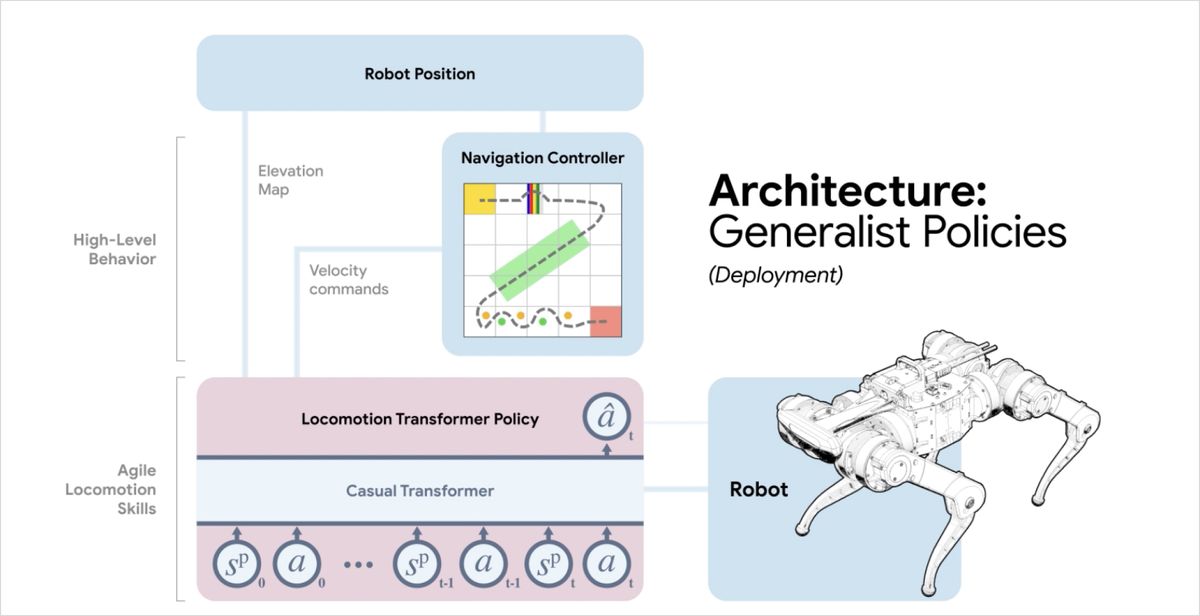
Researchers at Google DeepMind recently published Barkour, a benchmark for evaluating the agility and locomotion capabilities of quadruped robots. In their paper, the research team establishes a scoring system and obstacle course inspired by dog agility competitions. Successfully navigating the course in a short amount of time and with minimal errors demonstrates a high degree of agility and versatility for legged robots.
Establishing quantitative benchmarks has been crucial for progress in AI, especially in areas like computer vision and reinforcement learning. However, benchmarks for legged robotics have been lacking, making it difficult to measure progress toward advanced mobility and dexterity. Barkour aims to fill this gap by providing an intuitive metric grounded in animal performance. By requiring a diverse skill set including walking, jumping, and slope climbing, Barkour provides an intuitive understanding of progress in robot mobility.
Despite Barkour's focus on quadrupedal locomotion, there is a rising interest in bipedal, humanoid robots among many technology companies. This signals the need for future benchmarks to evaluate a broader range of legged morphologies. Leading the pack is Boston Dynamics, now a subsidiary of Hyundai. Their quadruped robot, Spot, is already commercially available and has demonstrated impressive agility. The company's humanoid Atlas robot has also shown remarkable dexterity and mobility. Other companies are joining the fray, with Figure recently raising $70 million to develop their own legged robots, and Tesla planning for its Optimus bot to eventually work on factory floors.
The Barkour benchmark is a step forward in the field of legged robotics. It offers a concrete, intuitive metric for quadruped robot agility and highlights the need for similar measures for bipedal robots. However, the field is rapidly diversifying into bipedal and other morphologies. Future work should build on Barkour by developing benchmarks that can assess a range of legged robots, fueling continued progress toward advanced mobility and dexterity across the board. With more robotics companies investing in legged machines, benchmarks will be crucial for measuring and driving progress.

